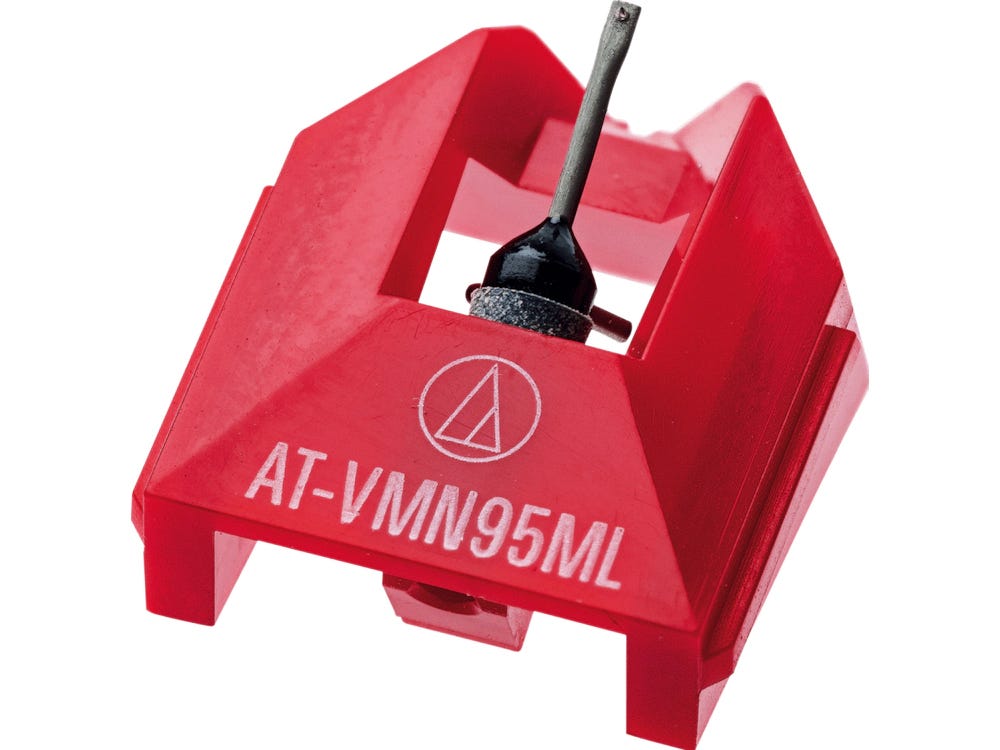Upgrade your ears
Want your old records to sound like new? The solution may be simpler than you think

Not all styli are identical. A basic understanding of the main types and their capabilities is key to making informed decisions and troubleshooting sound issues.
Types of styli (based on shape)
Spherical/conical styli are the most common and least expensive. They touch the centre of the record groove walls, so they lack precision in high-frequency passages. Average lifespan: 300-500 hours of playback.
Elliptical styli make contact across a larger area of the groove wall, so they trace grooves more accurately and can extract more information. Typically found in mid-range entry-level cartridges. Average lifespan: 300-400 hours.
Fine line/shibata/hyperelliptical styli offer better high-frequency performance, longer lifespan and lower distortion. However, they can be noisy when reading heavily worn records. They typically last 800 hours.
Microline/micro-ridge styli duplicate the shape of the cutting stylus used to produce original masters. Their multilevel ridge-shaped tip can read sections of the groove that other styli cannot reach. This allows them to track high-frequency passages extremely accurately. As they wear and track more evenly, they afford extended record and stylus life. Average lifespan is 1,000 hours.
For a more complete overview, click here and here.
Time for an upgrade
A couple of months ago I decided to upgrade to a microline (also styled Micro Line and sometimes called microlinear) stylus. Specifically, I went for the AT-VMN95ML. It’s slightly cheaper on Amazon (at least in the UK).
The ideal time to plan an upgrade is a couple of weeks before your stylus replacement is due. Not all styli will work with all cartridges, so you should always check compatibility with your cartridge.
Why microlinear
The shibata versus microline debate is one of the fiercest in the vinyl audiophile world.
Some collectors prefer shibata because they claim the sound is warmer. Most agree, however, that microline is more precise.
As Shibata is slightly more expensive, some people assume it’s superior, but this is due to patent issues. Microline is arguably more advanced from a technical standpoint.
At this level, there are subjective elements at play, so it is ultimately a matter of preference.
I chose microline for three main reasons:
lower upfront and maintenance costs;
it wears records (and itself) less; and
the sound is cleaner, deeper and more precise, particularly on heavily worn records.
The result
Probably one of the best investment decisions I’ve ever made.
I notice it mostly in the inner grooves, i.e. the last tracks of each side of a record. I tend to favour original releases over reissues and own a healthy amount of second-hand vinyl from the 1960s, 1970s and 1980s. While most are in decent condition, sibilance and distortion are common, especially in longer records.
Some tracks I thought were beyond repair suddenly started shining again.
I’d love to hear your thoughts in the comments. What’s your experience upgrading your stylus? Does distortion on old records bother you?
Thanks for reading and/or listening. Happy spinning!






Wish I knew how many hours my current stylus has on it, may have to keep track for my next one.